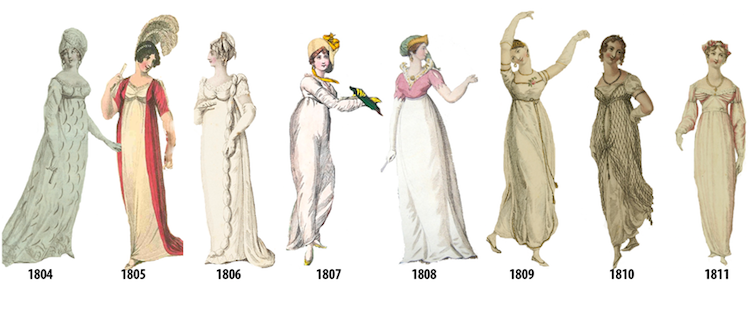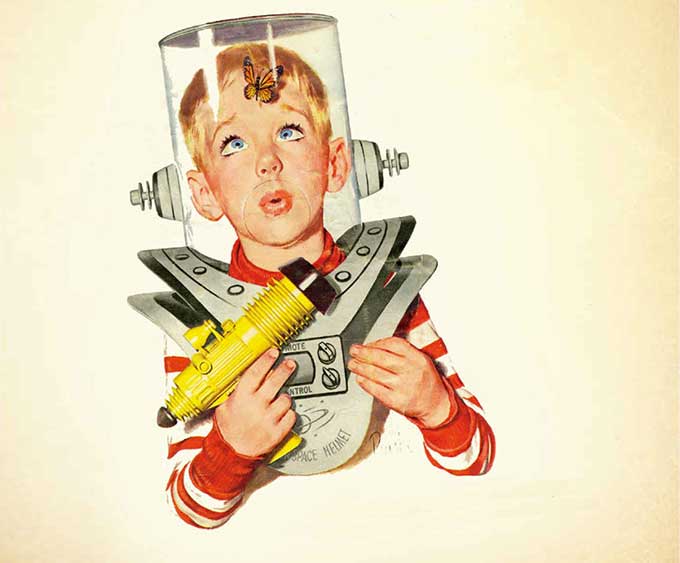via Creative Commons by Jennie Rose Helperin
“To those who think that mash-ups and sampling started with YouTube or a DJ’s turntables, it might be shocking to find that musicians have been borrowing – extensively borrowing, consciously and unconsciously – from each other since music itself began,” write James Boyle and Jennifer Jenkins, two superhero academics have taken on the subject of music and creativity in a new graphic novel. Meticulously researched and incredibly entertaining, the book explores 2,000 years of musical history, from Plato’s admonition that “musical innovation is full of danger to the whole state” to the recent “Blurred Lines” case – and everything in between.

Theft! A History of Music is the newest comic from Jenkins and Boyle, the team behind the 2006 fair use comic Bound by Law. Theft was written in collaboration with the late illustrator and academic Keith Aoki; Boyle and Jenkins developed the graphic designs that were illustrated and inked by Ian Akin and Brian Garvey. The book is licensed under CC BY-NC-SA 3.0 and is available on the website of the Duke Center for the Study of the Public Domain.
Continue reading
=============================
Medievalists: 260,000 digitized images of Jewish art and artifacts now online
via ResearchBuzz Firehose: by Medievalists.com

Image from the Bezalel Narkiss Index of Jewish Art: Tripartite Mahzor, Lake Constance Area, ca. 1322 (Oxford, Bodleian Library) – The Tripartite Mahzor is a magnificent illuminated manuscript divided into three volumes, adorned by paintings in colors and gold, produced in a non-Jewish workshop. Here the initial word: כל (“All”) opening the Eve of Yom Kippur prayers is written within a colorful panel adorned with hybrid creatures. (Credit: Hebrew University / Center for Jewish Art)
The Hebrew University’s Center for Jewish Art has launched the world’s largest index of Jewish Art, a collection of more than 260,000 digitized images of Jewish objects and artifacts from all over the world. The Index preserves the rich artistic heritage of the Jewish people throughout time and across the globe.
Continue reading
=============================
Cézanne unmasked: the shattering portraits that blew Picasso and the Paris avant garde away
via the Guardian by Jonathan Jones

He painted his wife without lips. He painted his friend with a spinal deformity. And he painted himself as a ghost in a top hat. Paul Cézanne’s unflinching portraits, coming to Britain this autumn, didn’t just astonish Picasso and his disciples. They changed art for ever.
In Paris at the dawn of the 20th century, a generation of young artists changed everything. They visited the dusty yet magical galleries of the Ethnography Museum in the rambling Trocadéro and some started their own collections of African masks. This fascination with non-European art helped them break with hundreds of years of tradition. Pablo Picasso completed a portrait of his friend Gertrude Stein by giving her a mask instead of a face. He then painted Les Demoiselles d’Avignon with its wildly cavorting masked prostitutes. Modern art was born in those bold years, in a glamorous atmosphere of absinthe, drugs (Picasso and his friends dabbled in opium) and sex in the red light district of Montmartre.
Continue reading
=============================
Stranger than friction: when matches were dangerous
via Boing Boing by Ben Marks

In the latest in its ongoing series about objects the world once considered indispensable but has somehow managed to live without, Collectors Weekly turns its attention to match holders, which were popular from around 1826, when the friction match was invented, until the 1920s, when matchbooks and lighters rendered them obsolete.
Continue reading
=============================
via ResearchBuzz Firehose: Devin Coldewey at TechCrunch

Machine learning techniques excel at doing a good-enough job quickly in situations where there’s lots of data to grind through. It turns out that’s a great fit for backlogs of plant samples at herbariums and other repositories around the world, which have millions of the things waiting to be digitized and identified – including some that may be new to science.
There are thousands of such collections around the world housing some 350 million specimens like the ones shown. It’s suspected that hidden among them may be tens of thousands of new species – but the labor cost of manually going through all the samples to double-check them, modernize taxonomy and so on is prohibitive.
Continue reading
=============================
Bored of London-centric Britain? Blame the Romans and their roads
via the Guardian by Mike Pitts
Sasha Trubetskoy’s subway-style maps show Roman roads radiating from the capital like spokes – a 2,000-year-old template that still shapes Britain today

Across Roman Britain, we can pick out much that has since become familiar: central heating, hot water and baths, brick and stone houses with straight walls, managed cemeteries beyond city boundaries, literacy, a regulated currency.
But there is really only one thing that lives on as a functioning part of our world: the roads. Roman engineers set a template that still shapes Britain.
Roman grids can often be picked out in our modern cities. When Jenson Button drove a Formula One McLaren along Manchester’s Deansgate in 2011, he was speeding down a Roman road. The junction of Chichester’s two main Roman streets is marked by a medieval cross. A Roman road gave London Oxford Street; another gave the passage that separates the two great blocks of Bloomberg’s new Foster-designed European HQ, opening in the capital in autumn.
Continue reading
=============================
Nearly two centuries of yearly evolution of women's high fashion
via Boing Boing by Andrea James

Over at Imgur, user Q1s2e3 posted a timeline of women's high fashion from 1784 to 1970, focusing entirely on trends in Europe and North America. In fact, it's interesting that the switch in representation to American-style looks happened in the early 20th century.
Continue reading
=============================
Moon had magnetic field at least a billion years longer than thought – study
via the Guardian by Nicola Davis

Scientists have long puzzled over when the moon’s magnetic field disappeared.
Photograph: Jack Guez/AFP/Getty Images
The moon’s magnetic field lasted at least a billion years longer than previously thought, researchers have revealed, shedding light on an enduring lunar mystery and expanding the possibilities in the hunt for habitable worlds beyond Earth.
Nowadays, the moon has no global magnetic field, but that was not always the case; between 4.25bn and 3.56bn years ago, the lunar magnetic field was similar to that of the Earth. The field is thought to have been generated by the churning movement of fluids within the moon’s molten core – a sort of lunar dynamo.
But scientists have long puzzled over when the magnetic field disappeared, with previous research unable to tell whether the field had disappeared completely by 3.19bn years ago or had lingered on in a weaker form.
Continue reading
=============================
Ah, the Past ...
via 3 Quarks Daily by Elise Hempel
For many years I've loved to go antiquing, heading out with my partner on a Saturday afternoon to discover some quaint and hidden new antique shop, browsing through old pottery and glass, vintage knick-knacks and rusty railroad lamps, escaping the computer and TV for a while, the routine of daily life. Even better if the shop is slightly dim, with a certain mustiness to the air, if soft classical music surrounds me as I drift and imagine past the locked glass cases and open shelves. Even better if there's dust on those shelves.
Continue reading
=============================
How Americans got so weird about science
via Boing Boing by Ben Marks

Why is it so hard for so many Americans to get their heads around the science behind climate change? Well, according to Rebecca Onion, it may be because of the way we have historically applauded little boys for their interest in physics and chemistry, but view these same little boys with a certain amount of suspicion when they grow up to be actual scientists, many of whom have been depicted in popular culture as “mad” and – wait for it – Russian.
Continue reading
No comments:
Post a Comment